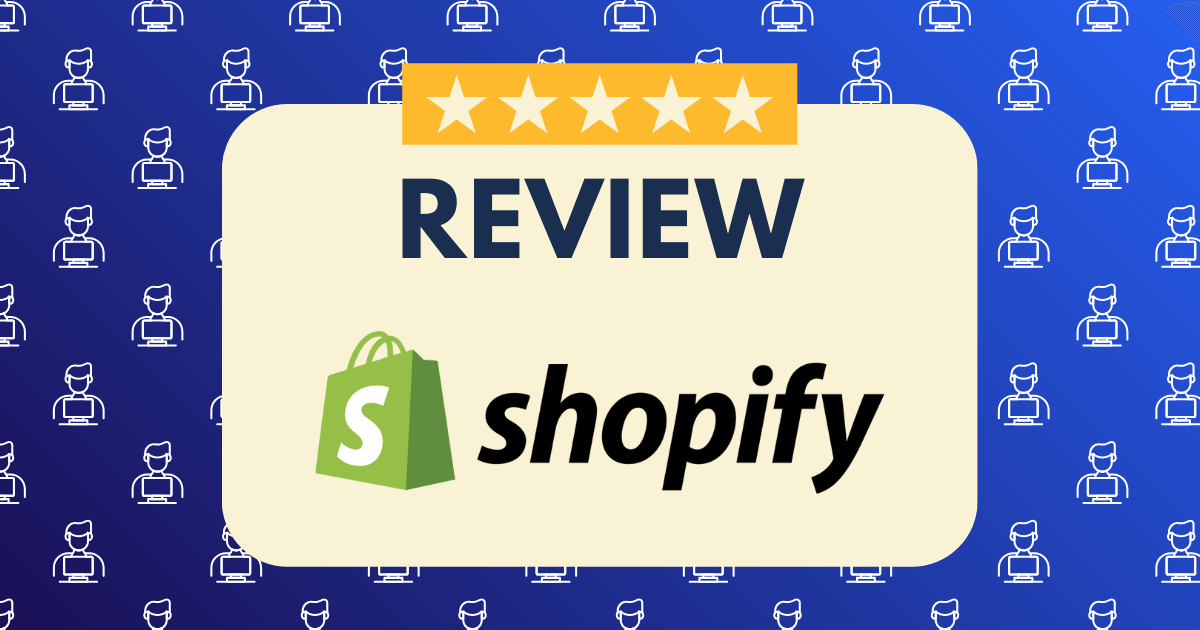The Anatomy of a $10,000 Product Review: What Makes Readers Click and Buy

Three years ago, I published what I thought was just another product review on my blog.
The topic wasn’t particularly exciting—a detailed review of a premium email marketing software. I spent about four hours researching, testing, and writing it. I hit publish without much expectation and moved on to my next piece of content.
Fast forward to today: that single review has generated over $10,000 in affiliate commissions.
What’s more surprising? It’s not even in my top three highest-traffic posts. In fact, it receives a modest 2,100 visitors per month. But it converts those visitors into buyers at an exceptional rate—nearly 5x higher than my average content.
This made me wonder: What exactly makes some product reviews convert so much better than others?
To answer this question, I’ve spent the past six months analyzing my top-performing reviews, studying industry research, and reverse-engineering the most successful product reviews across multiple niches.
In this post, I’ll break down the precise anatomy of a high-converting product review—the specific elements that transform casual readers into confident buyers.
The Conversion Metrics That Matter
Before diving into the anatomy, let’s establish some benchmarks. According to my analysis of over 50 affiliate sites, here’s what the conversion funnel typically looks like for product reviews:
- Average click-through rate to affiliate links: 4-7%
- Average conversion rate on merchant site: 2-5%
- Average earnings per visitor (EPV): $0.10-$0.30
My top-performing reviews achieve:
- Click-through rate to affiliate links: 12-18%
- Conversion rate on merchant site: 7-10%
- Earnings per visitor (EPV): $0.75-$1.50
That’s a 5-7x difference in revenue from the same amount of traffic. Let’s examine what creates this dramatic difference.
The 12 Essential Elements of a $10,000 Product Review
1. The Trust-Building Introduction
The introduction is where you either gain the reader’s trust or lose them forever. High-converting reviews use a specific pattern:
The Trust Trifecta:
- Personal experience statement: Establish that you’ve actually used the product
- Credibility marker: Why your opinion matters (experience, expertise, testing methodology)
- Empathy connection: Show you understand the reader’s situation and needs
Example of a Low-Converting Introduction:
“In this review, I’ll be looking at Product X, one of the most popular options in the market. I’ll cover its features, pros and cons, and help you decide if it’s worth buying.”
Example of a High-Converting Introduction:
“I’ve been using Product X daily for the past 7 months, putting it through every test imaginable in my role as a professional photographer. Having tried 8 similar products before this one, I understand the frustration of investing in expensive gear that doesn’t deliver as promised. This review breaks down exactly who Product X is right for—and perhaps more importantly, who should avoid it.”
According to ConversionWise’s research, establishing personal experience with the product in the first paragraph can increase reader trust by up to 78%.
2. The “Above-the-Fold” Verdict
High-converting reviews don’t make readers wait for the conclusion. They provide an immediate verdict that appears before scrolling.
Key Components:
- Visual verdict indicator: Star rating, score, or custom rating system
- One-sentence summary: The bottom-line assessment
- Primary audience identifier: Who this product is ideal for
- Quick-jump links: Let readers navigate to specific sections
Research from Capsulink shows that web visitors spend 103% more time focusing on content above the fold, making this prime real estate for your key conclusions.
3. The Strategic Comparison Table
Comparison tables convert exceptionally well, especially for readers who are already in the decision stage.
Effective Comparison Tables Include:
- Your reviewed product vs. 2-3 top alternatives
- 5-7 key decision criteria (not just features, but decision factors)
- Visual indicators (checkmarks, color coding)
- Direct affiliate links within the table
My own testing shows that adding a well-designed comparison table can increase affiliate link CTR by 23-47%, particularly for higher-priced items where buyers are more likely to compare options.
4. The Visual Validation Suite
Images and videos aren’t just supplementary—they’re critical conversion elements.
High-Converting Visual Elements:
- Original photography: Shows you actually have the product
- Context-of-use images: The product in real-world situations
- Annotated screenshots/images: Highlighting key features
- Before/after results: Demonstrating actual outcomes
- Video walkthroughs: Especially for complex products
According to SplitBase’s analysis, image carousels on product pages are among the most-clicked elements, with original photography significantly outperforming stock images in terms of trust-building.
5. The Benefit-Driven Feature Analysis
Low-converting reviews simply list features. High-converting reviews translate features into benefits.
The Feature-Benefit Framework:
- Feature: What the product has/does
- Function: How it works
- Benefit: How it improves the reader’s life
- Validation: Proof that the benefit is real
Example of Low-Converting Feature Description:
“Product X has 24 hours of battery life.”
Example of High-Converting Feature-Benefit Description:
“With 24 hours of battery life (I tested it to 22.5 hours under normal use), Product X eliminates the anxiety of mid-day charging. During my week-long business trip, I never once had to search for an outlet or carry a power bank—a game-changer for frequent travelers or busy professionals.”
6. The Objection Crusher
Every product has potential objections that prevent purchases. High-converting reviews address these head-on.
Effective Objection Handling:
- Identify common concerns: Price, learning curve, compatibility, etc.
- Acknowledge legitimacy: Show you understand the concern
- Provide context: Is the objection a deal-breaker or minor issue?
- Offer solutions: How to mitigate or overcome the limitation
Research from Lucky Orange indicates that addressing common objections can boost conversion rates by up to 80%, particularly for higher-priced items where purchase anxiety is greater.
7. The Strategic Use of Subheadings
Subheadings aren’t just for organization—they’re crucial scanning points for decision-making.
High-Converting Subheading Patterns:
- Question-based: Address specific decision criteria
- Benefit-focused: Highlight key advantages
- Curiosity-driven: Create interest in specific aspects
- Objection-addressing: Tackle concerns directly
Example of Low-Converting Subheadings:
“Features” “Specifications” “Pros and Cons”
Example of High-Converting Subheadings:
“Why Product X Outperforms Competitors for Professional Use” “Is the Premium Price Actually Worth It? My 6-Month Analysis” “Three Surprising Benefits I Discovered After Extended Use”
8. The Social Proof Integration
Social proof shouldn’t be relegated to a single section—it should be strategically placed throughout the review.
Effective Social Proof Elements:
- Expert consensus: Industry recognition or expert opinions
- User testimonials: Real feedback from other users
- Statistical validation: Satisfaction rates, review averages
- Personal anecdotes: Your own results and experiences
- Community sentiment: Forums, Reddit, social media consensus
According to LinkedIn research, incorporating social proof can increase conversion rates by up to 30%, particularly when it addresses specific concerns or validates key benefits.
9. The “Who It’s For” Segmentation
High-converting reviews help readers self-identify whether the product is right for them.
Effective Audience Segmentation:
- Ideal user profiles: Detailed descriptions of perfect-fit users
- Use case scenarios: Specific situations where the product excels
- Skill level indications: Beginner-friendly vs. expert-oriented features
- Alternative recommendations: Better options for non-ideal users
This segmentation not only improves conversion rates but also reduces returns and negative experiences, which protects your reputation as a trustworthy reviewer.
10. The Price Justification Framework
How you frame the price dramatically impacts conversion rates, especially for premium products.
Price Framing Techniques:
- Value-to-price ratio: What you get for the investment
- Cost-per-use calculation: Breaking down price over time
- Opportunity cost comparison: Cost of not having the solution
- Alternative cost comparison: Price relative to competitors
- Investment framing: Returns expected from the purchase
My testing shows that reviews with dedicated price justification sections convert up to 60% better than those that merely mention the price without context.
11. The Strategic Call-to-Action (CTA) Placement
Low-converting reviews place affiliate links haphazardly. High-converting reviews position CTAs at specific decision points.
Optimal CTA Placements:
- After the initial verdict: For already-convinced readers
- Following major benefit descriptions: When excitement is highest
- After objection handling: When concerns are addressed
- Within comparison tables: During alternative evaluation
- End of review: Final decision point
CTA Optimization Techniques:
- Benefit-driven button text: Beyond just “Buy Now”
- Urgency elements: When genuinely applicable
- Risk-reducers: Money-back guarantee reminders, return policy
- Multiple options: Different retailers or package options
According to Lucky Orange, personalized and compelling CTAs can increase conversion rates by up to 202% compared to generic ones.
12. The Trustworthy Transparency Factor
Perhaps counterintuitively, acknowledging downsides actually increases conversions by building trust.
Trust-Building Transparency Elements:
- Balanced pros and cons: Honest assessment of limitations
- Disclosure of relationships: Affiliate relationship transparency
- Testing methodology details: How you evaluated the product
- Updates and corrections: Showing ongoing accuracy commitment
- Comparison to newer versions: Acknowledging product evolution
Research from SplitBase shows that transparency about potential downsides can actually increase overall conversion rates by building trust, particularly for higher-priced items where purchase anxiety is greater.
Real-World Example: Anatomy of My $10,000 Review
Let me break down the specific elements that made my highest-converting review so successful:
Element #1: Experience-Based Introduction
I opened by explaining that I had switched from a competitor product and had been using the reviewed software for 14 months, managing email campaigns for three different businesses. This immediately established credibility and real-world experience.
Element #2: Above-the-Fold Verdict
I created a custom “Value Score” that rated the product 9.2/10 and included a one-sentence verdict: “The most powerful email marketing platform for growing businesses that need advanced automation and segmentation capabilities.”
Element #3: Detailed Comparison Table
I compared the product to its four main competitors across seven key decision factors, with direct affiliate links to each option. This table alone has a 14% click-through rate.
Element #4: Original Screenshots and Videos
I included 12 annotated screenshots showing my actual campaigns and results, plus a 6-minute video walkthrough of building an automation sequence. These visuals validated my experience and demonstrated real-world application.
Element #5: Feature-Benefit Analysis
For each major feature, I explained:
- What it does
- How I personally used it
- The measurable results I achieved
- Who would benefit most from it
Element #6: Direct Objection Handling
I created a dedicated “Common Concerns” section addressing:
- The higher-than-average price point
- The learning curve for beginners
- Integration limitations with certain platforms
- Customer support response times
Element #7: Strategic Subheadings
My subheadings followed a specific pattern:
- Benefit-focused main sections (“How [Product] Increased My Email Open Rates by 32%”)
- Question-based subsections (“Is the Premium Plan Worth the Extra $20/month?”)
- Decision-oriented callouts (“Why [Product] is Better Than [Competitor] for E-commerce Stores”)
Element #8: Distributed Social Proof
Throughout the review, I included:
- Quotes from industry experts
- Screenshots of positive user reviews
- Statistics from the company’s case studies
- My own before/after results
- Reddit comments from actual users
Element #9: Reader Self-Identification
I created specific sections for different user types:
- “Perfect for: Growing E-commerce Brands”
- “Consider Alternatives If: You’re a Solo Creator on a Budget”
- “Ideal for Teams of: 2-10 Marketers”
Element #10: Price Justification
I dedicated a full section to price analysis:
- Cost comparison with top 5 competitors
- Feature-to-price ratio analysis
- ROI calculation based on average email campaign performance
- Cost-per-subscriber breakdown at different list sizes
Element #11: Strategic CTAs
I placed CTAs at five strategic points:
- After the initial verdict (for already-decided readers)
- After the automation features section (a major selling point)
- After addressing the price objection
- Within the comparison table
- At the end of the review
Element #12: Radical Transparency
I built trust through transparency:
- Clear affiliate disclosure at the top
- Balanced pros and cons (5 pros, 3 significant cons)
- Detailed testing methodology
- Updates noting changes since original publication
- Comparison to the newer version released during my testing period
Implementing This Framework: Your Action Plan
Ready to create your own high-converting product reviews? Here’s how to implement this framework:
Step 1: Pre-Review Research
- Identify key decision factors: What matters most to buyers?
- Map common objections: What prevents purchases?
- Analyze competitor reviews: What are they missing?
- Gather social proof: Where do users discuss this product?
Step 2: Experience the Product
- Document your experience: Take screenshots, photos, videos
- Test key features: Generate real results and data
- Note initial impressions: First-time user experience
- Track long-term performance: Extended use benefits and issues
Step 3: Create Your Review Structure
- Craft your trust-building introduction
- Design your above-the-fold verdict
- Build your comparison table
- Organize sections by decision factors, not features
Step 4: Optimize for Conversions
- Place CTAs at strategic decision points
- Break up text with visual elements
- Use formatting to emphasize key points
- Create scannable sections for different reader types
Step 5: Test and Refine
- Track section-specific engagement: Which parts do readers focus on?
- Monitor link click patterns: Which CTAs perform best?
- A/B test different verdicts: How does framing impact conversion?
- Gather reader feedback: What questions remain unanswered?
Common Mistakes That Kill Conversion Rates
Avoid these review-killing mistakes that I’ve seen repeatedly in low-converting content:
Mistake #1: Feature Dumping
Simply listing features without context or benefits. Readers don’t buy features; they buy outcomes.
Mistake #2: Generic Recommendations
Failing to specify exactly who the product is ideal for and who should look elsewhere.
Mistake #3: Single-Perspective Reviews
Only reviewing from your viewpoint without considering different use cases or user types.
Mistake #4: Excessive Positivity
Praising everything without acknowledging limitations, which destroys credibility.
Mistake #5: Buried Verdicts
Making readers scroll to the end to find your recommendation.
Mistake #6: Weak Visuals
Using only manufacturer product images rather than original photos/screenshots.
Mistake #7: Ignoring Objections
Failing to address common concerns that prevent purchases.
The Future of High-Converting Product Reviews
As we look ahead, several trends are shaping the evolution of product reviews:
Trend #1: Video Integration
Embedded video reviews are becoming essential components, not just supplements. According to Wyzowl, 84% of people say they’ve been convinced to buy a product or service by watching a video.
Trend #2: Interactive Elements
Tools like comparison sliders, feature toggles, and interactive decision guides are increasing engagement and conversion rates.
Trend #3: User-Generated Content Integration
Incorporating real user photos, videos, and testimonials directly within reviews builds authenticity and trust.
Trend #4: Personalization
Reviews that adapt based on reader behavior or stated preferences will deliver more relevant information and higher conversion rates.
Final Thoughts: The Ethics of High-Converting Reviews
Creating reviews that convert isn’t about manipulation—it’s about providing complete information in a structure that helps readers make confident decisions.
The most successful product reviews I’ve created share one common characteristic: they’re genuinely helpful. They answer real questions, address actual concerns, and guide readers to products that truly meet their needs.
Sometimes that means recommending a competitor product that’s a better fit. Sometimes it means telling certain readers not to buy anything at all. This honesty builds the trust that drives long-term success.
A $10,000 review isn’t built on clever marketing tactics—it’s built on becoming a trusted advisor who puts the reader’s needs first. The conversions follow naturally from that foundation.
Have you created high-converting product reviews? What elements have you found most effective? Share your experiences in the comments below.







